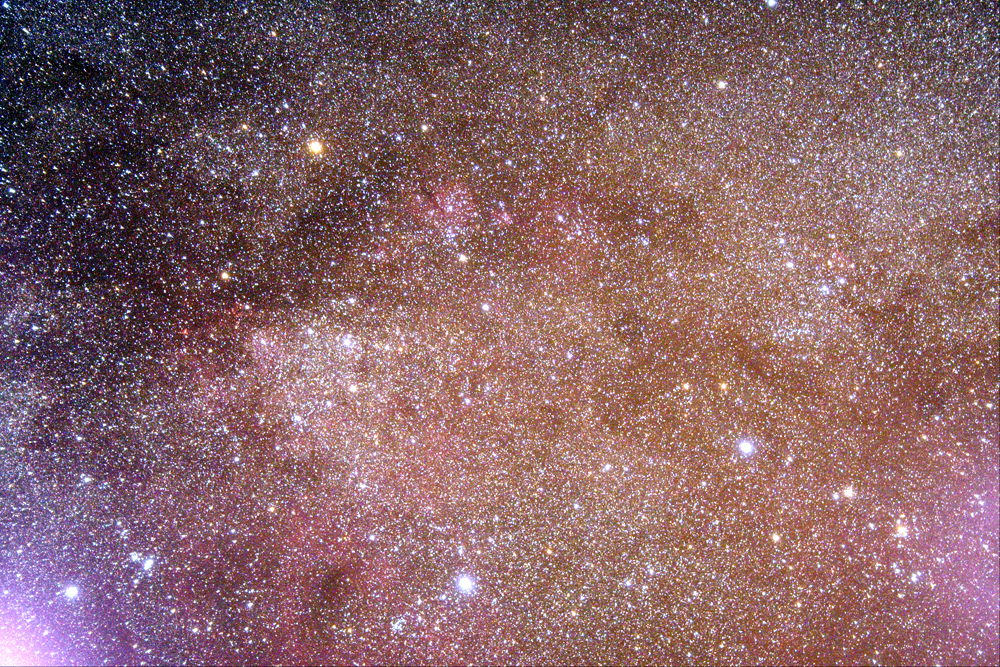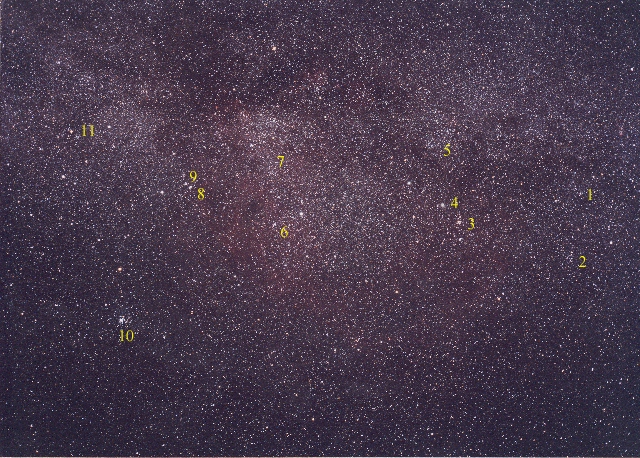
30 minutes exposure, Fuji Super G 400 film. 100mm f/2.0 Minolta lens.

Moving southeastwards from Canis Major brings into view the rich Milky Way of Puppis and Vela. Both of these constellations, along with Carina and Pyxis, were part of the old constellation, Argo. The further east the observer looks, the brighter and richer the Milky Way becomes. The reason is that in Carina there is a nearby arm of the Milky Way. Containing numerous open clusters and many bright nebulae, this region is almost unknown to northern hemisphere observers due to is far southern declination.
| Number | Name | R.A. | Dec | |
| 1 | Cr 140 | 7 23.9 | -32 12 | |
| 2 | Cr 132 | 7 15.0 | -31 00 | |
| 3 | NGC 2451 | 7 45.4 | -37 58 | Image |
| 4 | NGC 2477 | 7 52.3 | -38 33 | Image |
| 5 | NGC 2546 | 8 12.4 | -37 38 | |
| 6 | NGC 2547 | 8 10.7 | -49 16 | Image |
| 7 |
Vela Supernova Remnent |
8 30 | -45 | |
| 8 | IC 2391 | 8 40.2 | -53 04 | |
| 9 | NGC 2669 | 8 44.9 | -52 58 | |
| 10 | NGC 2516 | 7 58.3 | -60 52 | Image |
| 11 | IC 2488 | 9 27.6 | -56 59 |
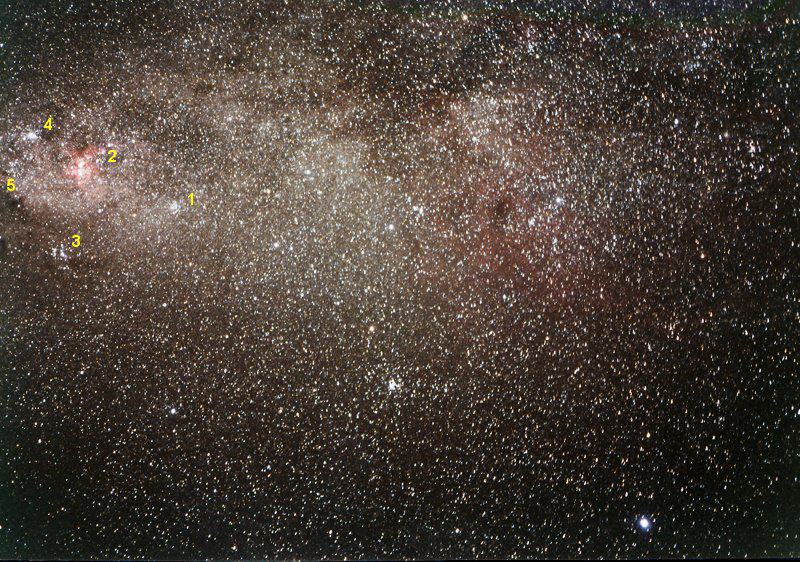
| Number | Name | R.A. | Dec | |
| 1 | NGC 3114 | 10 02.7 | -60 07 | Image |
| 2 | NGC 3372 | 10 43.8 | -59 52 | Image |
| 3 | IC 2602 | 10 43.2 | -64 24 | Image |
| 4 | NGC 3532 | 11 06.4 | -58 40 | |
| 5 | NGC 3572 | 11 10.4 | -60 14 |
The bright star near the bottom right is Canopus.
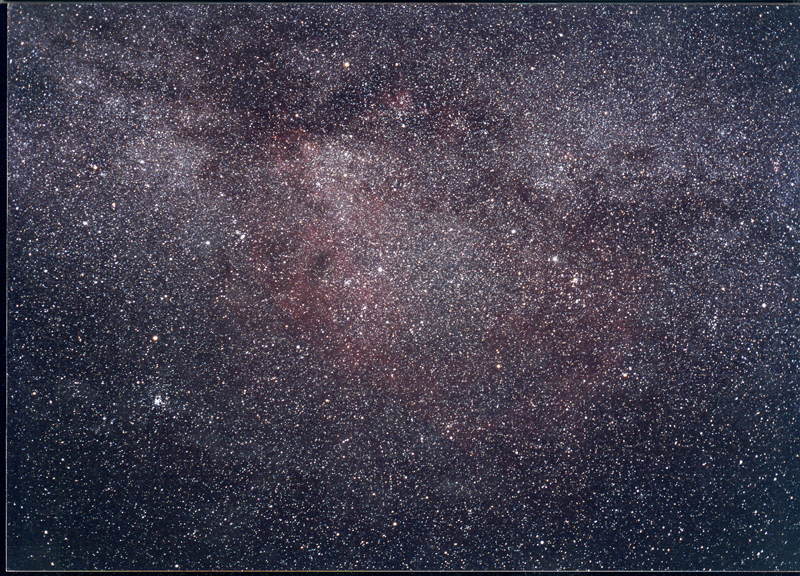
This image is centred on the Vela supernova remnent. This huge object is visible in the photograph as a large redish doughnut, covering over 30 degrees of the sky.
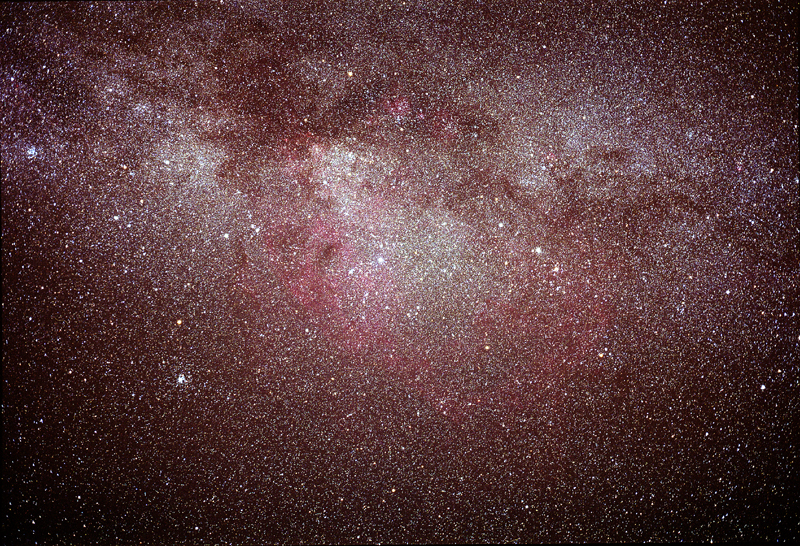
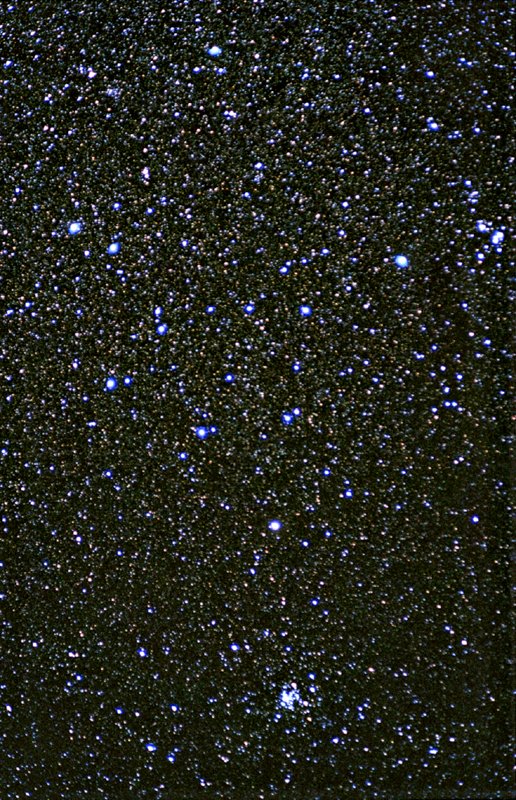
The above photograph shows the asterism known as the "False Cross", so called because of its similarity to the Southern Cross, which is some 20 degrees to the east. The Large open cluster at the bottom of the figure is NGC 2516.
